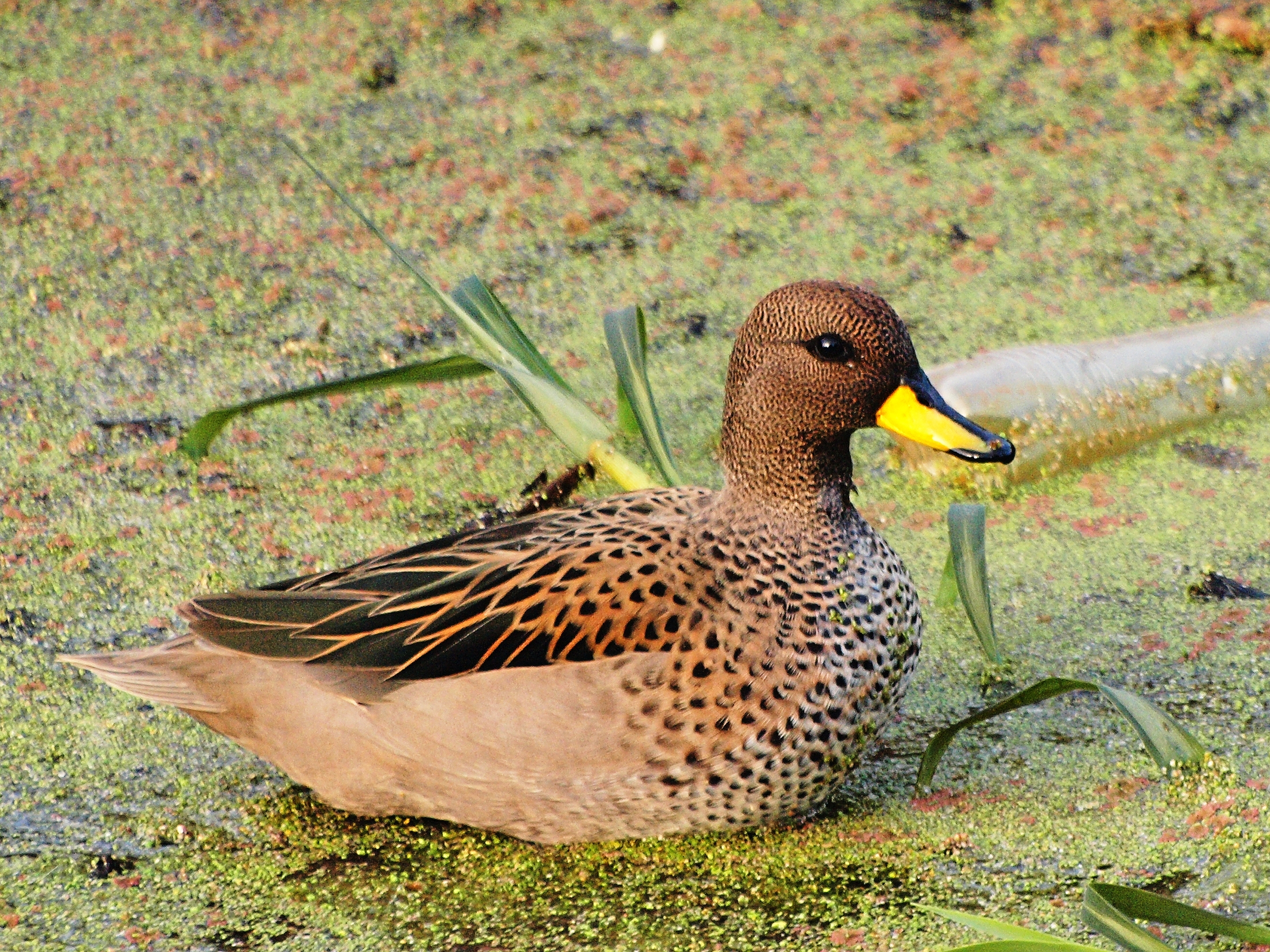
Yellow-billed pintail(Anas georgica)
Phylum —chordata
Class — aves
Order — anseriformes
Family — anatidae
Genus –anas
Appearance
The yellow-billed pintail measures 17-22 inches (43-55 cm) in length - including the tail.
It has a brown head and neck, and a bright yellow bill with a black tip and a black stripe down the middle. The pointed tail is brownish. The upper wing is greyish-brown, and the secondary wing feathers are blackish-green. The rest of the plumage is buffish brown with varying size black spots.
Habitat
The yellow-billed pintail is a South American species, also present on Falkland Islands and South Georgia Island.
Diet
The yellow-billed pintail usually feeds mainly on plant matter and aquatic invertebrates. It feeds on seeds, roots, grasses, sedges, algae and various other aquatic plants. It also takes aquatic invertebrates such as crustaceans, mollusks and insects.
Reproduction
The breeding season varies according to the range. In the Falklands, the laying occurs between September and December. In South Georgia, this species lay the eggs between December and March. Several clutches are produced, 2-3 in places, and 3 in South Georgia.
The yellow-billed pintail may nest solitary or in loose groups.The nest is on the ground, usually well hidden among the vegetation and near water. It is made with grass and stems, and lined with down from the female’s breast.
The female lays 4-10 eggs and incubates during about 24-28 days. She is guarded by the male during this period. Both parents tend the chicks which fledge 45-60 days after hatching. They are precocial and go to the water very soon after hatching. They are able to feed themselves, under the protection of the adults.
In captivity
Lifespan in captivity is up to 30 years.
In summer, yellow-billed pintails are kept in outdoor enclosures. The minimum size of the enclosure is 3 square meters.
In winter, they should be transferred to an insulated enclosure with a temperature of at least +5 °C. However, these duckscan easily live at cold temperatures (up to -7 °C), and in areas where winter temperatures do not fall below -8 °C, they can be kept outdoors all year round. The minimum size of a winter enclosure is 2 square meters.It is desirable to equip the enclosure with additives in the form of branches and perches. In the winter room, you must install a pool with running or frequently replaced water. In areas with mild winters, yellow-billed pintails can be kept in outdoor enclosures.
In this case, all winter it is necessary to maintain a sufficient mirror of the reservoir for birds, not covered with ice. This is achieved in various ways, one of which may be the use of an air compressor. Long hoses from the compressor that pumps air are lowered to the bottom of the reservoir, and air bubbles, rising up, carry warmer water. With constant mixing of warm water from the lower layers of the reservoir with colder water from the surface, the possibility of ice formation is eliminated even in the most severe frosts.
As a winter bedding for waterfowl, you can use soft hay, which is laid out in places where birds rest.
The diet includes grain feed-corn, wheat, barley, millet, oatmeal, wheat bran, grass, meat and fish meal, chalk, small shell, gammarus. In the warm season, it is good to give various greens - cut dandelion leaves, lettuce, plantain, duckweed. Good food for ducks - wet mixture of grated carrots, bran, various cereals. During the reproductive period and during molting, they are mixed with wet foodor given separately: fish and minced meat. During working out a diet it should be calculated that the amount of raw protein does not exceed 16%.
Yellow-billed pintails are friendly to other birds, so they can be kept on the same pond with other ducks.
Artificial shelters for nests are installed in the paddock. Ducks independently incubate, breed and raiseducklings.
 Russian
Russian
 English
English
























